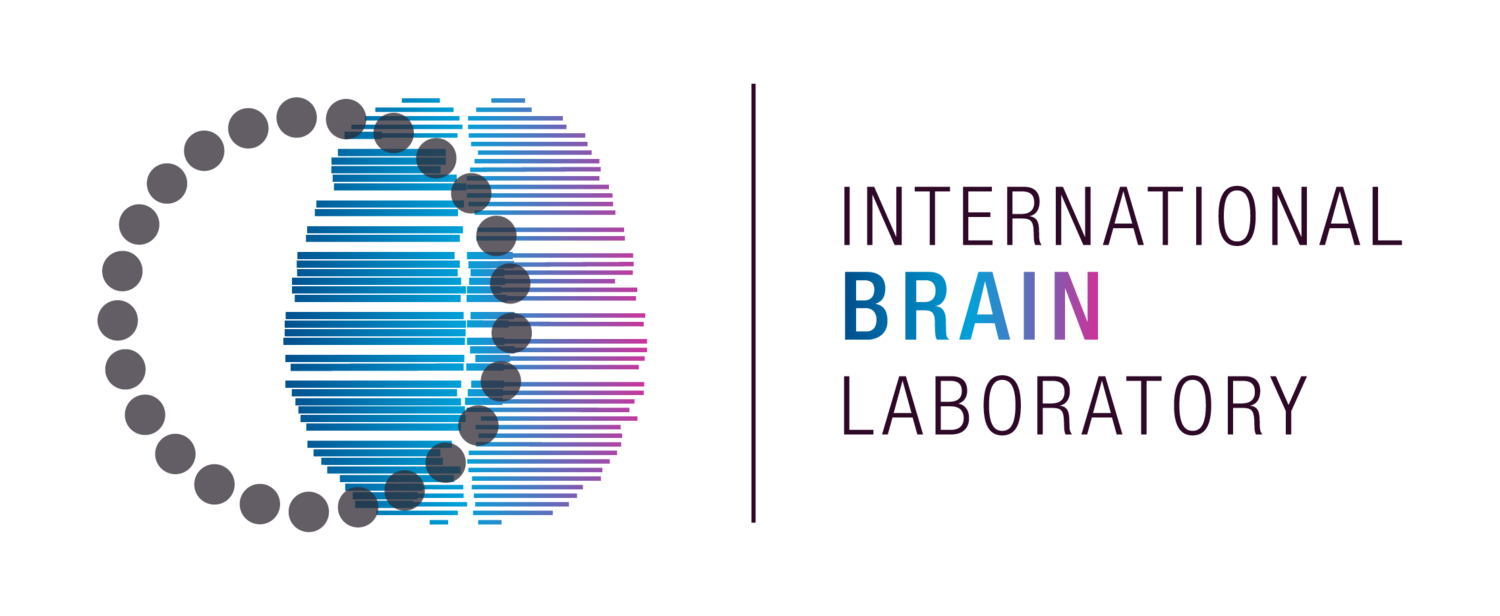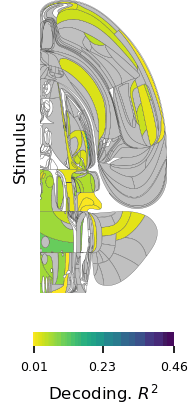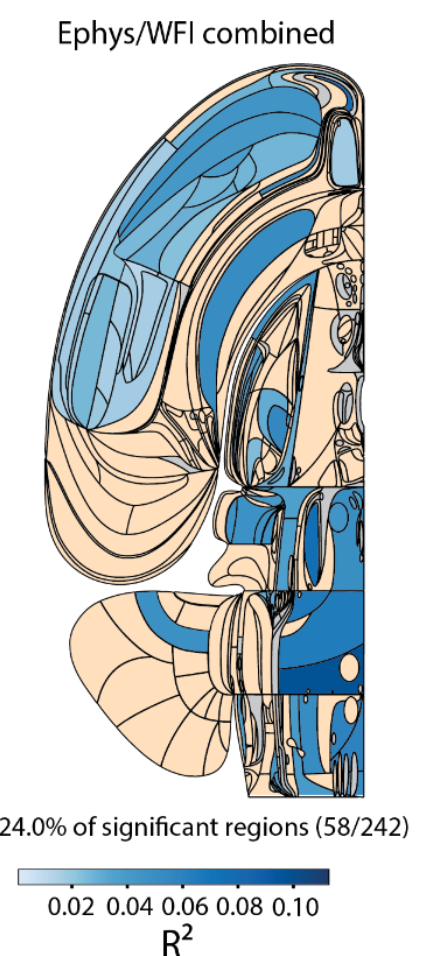The videos above show the change in firing rates of neurons across the entire brain during the average trial of the IBL decision-making task. Each dot represents one of 75,708 good units recorded in the brain-wide map dataset.
On the left, the size of each dot represents the change in firing rate from the baseline activity. Baseline activity was calculated as the average firing rate during the first 300ms of the trial (the quiescent period). Many neurons have low firing rates and may be invisible, but to make as many neurons visible as possible, the firing rate for each neuron has been normalized so that the maximum firing rate is represented by the largest dot size.
On the right, the size of each dot represents the normalized firing rate of each neuron, including baseline activity. Note that in this video, it is difficult to see neurons with transient activity and low maximum firing rates against the background of neurons with high firing rates. This illustrates that the task related activity is dwarfed by the ongoing cerebral activity (5% vs 95% of the variability), which is striking given that the task-related activity drives the behavior of the mice.
Press Release: Complete brain activity map revealed for the first time
A Brain-Wide Map of Neural Activity during Complex Behaviour
A key challenge in neuroscience is understanding how neurons in hundreds of interconnected brain regions integrate sensory inputs with prior expectations to initiate movements and thereby make decisions. It is difficult to meet this challenge if different laboratories apply different analyses to different recordings in different regions during different behaviours. Here, we report a comprehensive set of recordings from 621733 neurons across 139 mice in 12 labs performing a decision-making task with sensory, motor, and cognitive components, obtained with 699 Neuropixels probe insertions covering 279 brain areas in the left forebrain and midbrain and the right hindbrain and cerebellum. We provide an initial appraisal of this brain-wide map, assessing how neural activity encoded key task variables. Representations of visual stimuli appeared transiently in classical visual areas after stimulus onset and then spread to ramp-like activity in a collection of mid- and hindbrain regions that also encoded choices. Neural responses correlated with motor action almost everywhere in the brain. Responses to reward delivery and consumption versus negative feedback were also widespread. This publicly available dataset represents an unprecedented resource for understanding how computations distributed across and within brain areas drive behaviour.
Brain-wide representations of prior information in mouse decision-making
The neural representations of prior information about the state of the world are poorly understood. To investigate them, we examined brain-wide Neuropixels recordings and widefield calcium imaging collected by the International Brain Laboratory. Mice were trained to indicate the location of a visual grating stimulus, which appeared on the left or right with prior probability alternating between 0.2 and 0.8 in blocks of variable length. We found that mice estimate this prior probability and thereby improve their decision accuracy. Furthermore, we report that this subjective prior is encoded in at least 20% to 30% of brain regions which, remarkably, span all levels of processing, from early sensory areas (LGd, VISp) to motor regions (MOs, MOp, GRN) and high level cortical regions (ACAd, ORBvl). This widespread representation of the prior is consistent with a neural model of Bayesian inference involving loops between areas, as opposed to a model in which the prior is incorporated only in decision-making areas. This study offers the first brain-wide perspective on prior encoding at cellular resolution, underscoring the importance of using large scale recordings on a single standardized task.
Visualize and explore the brain-wide map dataset
Download the brain-wide map dataset (Data Documentation)
Download the widefield dataset
Code repositories for the Brain-Wide Map paper and the Prior Representation paper
To be updated on future data releases, please visit our data release page.



